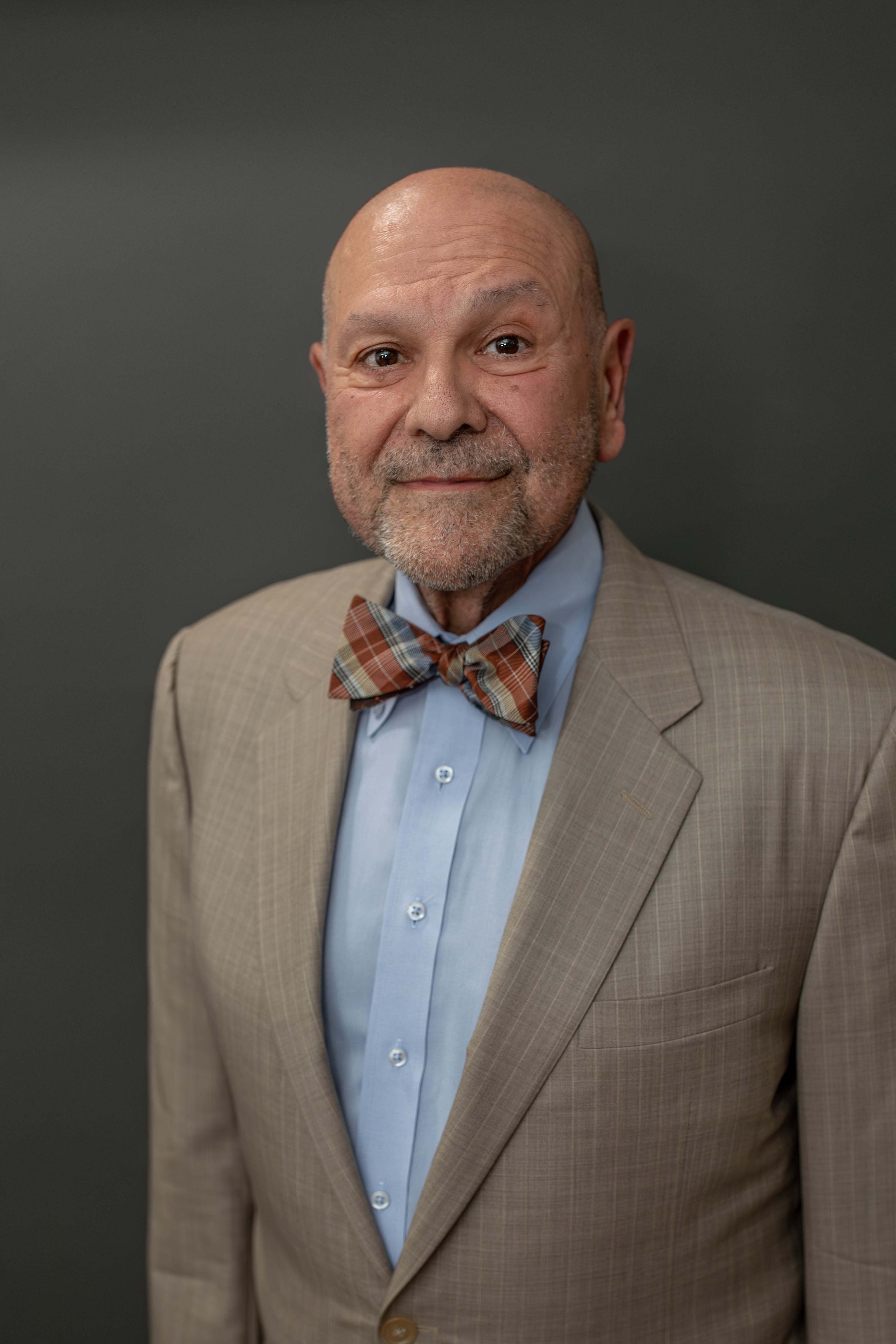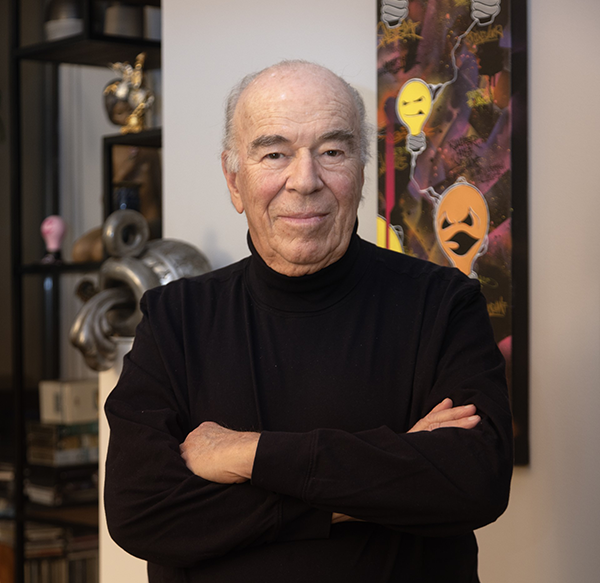Satan Goes to Court: Lawyers recall bizarre medical malpractice case

Psychiatrist Bennett Braun sits in a hotel room where he is holding material for presentation at a conference on multiple personality cases. (File photo by Michael L. Abramson/Getty Images)
In 1991, personal injury lawyers Zachary Bravos and Todd Smith took on the strangest medical malpractice case of their careers—a case that led them to tales of satanic cults, child abuse and cannibalism.
Their client, Patricia Burgus, a 29-year-old mother from Des Moines, Iowa, came to them with a disturbing story. She explained that she was treated by a Chicago psychiatrist who prompted her to retrieve memories that she committed and witnessed horrifying acts.
Burgus had originally sought treatment for post-partum depression. But during sessions in which she was under hypnosis and on medication, she supposedly retrieved suppressed memories of slaughtering babies during satanic rituals, molesting children and eating meatloaf her father had fashioned from human flesh.
After years of this so-called treatment for multiple personality disorder, as well as treatments for her two sons, Burgus realized it was all fiction and decided to take legal action. She sued her psychiatrist, Bennett Braun, along with his colleagues at Rush-Presbyterian-St. Luke’s Medical Center in Chicago.
The case eventually settled for $10 million. But Burgus was not the only one to sue Braun and his colleagues at Rush. Another client, Elizabeth Gale, also represented by Bravos and Smith, settled for $7.5 million. Under Braun’s treatment, Gale said, she was persuaded that her family forced her to breed babies for a satanic cult so they could be sexually abused, used in pornography and sacrificed. She later had surgery to prevent having children and briefly moved to Florida to escape her family.
Braun’s death at age 83 this past March sparked memories for the Chicago-area lawyers who exposed a series of unorthodox psychiatric treatments and helped end the “satanic panic” of the ’80s and ’90s. His death also brought relief to Gale, who had changed her name during treatment to protect herself.
“I’m glad he’s gone,” says Gale, now 72, retired and living in suburban Chicago. “He can’t hurt anyone else.”
A novel legal case unfolds
When they took the case, Bravos and Smith knew they had a unique challenge. “As a medical malpractice case, it represented something you don’t see very often—or at all,” Smith says. “I hadn’t done anything like this. I don’t think anyone had.”
Smith says typical malpractice cases, such as those involving surgical or medication errors, are simpler and easier to explain to juries. With psychiatric or mental health cases, plaintiffs are often questioned about whether they are the source of their own problems or whether they confabulated their stories.
Bravos, who first took on the Burgus case through a referral, knew he’d have to hire the best experts in psychiatry to discredit Braun’s methods of treatment. He says a growing number of psychiatrists already were pushing back on treatment for multiple personality disorder—also known as disassociate identity disorder. Because Bravos had a solo practice, hiring experts would be costly, so he asked Smith, founding partner of Smith LaCien, to join him for support.
The lawyers assembled experts in the field, along with mountains of evidence, including medical files, depositions, sworn statements and medication records. Moreover, they found nothing to back claims of murdered babies, cannibalism or ritual abuse.
 Zachary Bravos. (Bridget Brown Photography)
Zachary Bravos. (Bridget Brown Photography)Signs of the times
Braun and his colleagues began treating Burgus and Gale in the 1980s amid a growing public fascination with multiple personality disorder, thanks largely to the book and movie Sybil—later discredited. There also were outsized fears that violent satanic cults were operating around the country, as well as false reports that children were being sexually abused and sacrificed at the McMartin Preschool in California.
Smith found it hard to believe that a hospital with Rush’s reputation would accept, without question or verification, the reports that Braun shared about patients being involved in murderous acts. “They set him up, essentially, with a whole floor of patients,” he says. “I had this vision of 8 to 10 Sybils over there, and it just didn’t make sense. A very high-end institution has this going on behind its walls. How could they let this happen?”
Bravos dug deep into satanism, having once defended a client charged with child molestation who was falsely accused of being a Satanist. “I have an unusual library of source materials going back to the to the Salem witch trials,” he says.
He also obtained videotapes of therapeutic sessions during which he witnessed the suggestive tactics that prompted patients to believe their cult involvement. “I mean, the therapeutic techniques that they did with these people were crazy,” he says.
Looking back, Smith says he was astonished by the phony memories Braun elicited from Burgus and Gale. “The claims that she was a breeder for the cult, even though she never had children, that was pretty horrendous,” he says. “I remember her as being very gentle and kind.”
For years, Gale did not question Braun, who sometimes would conduct his sessions after midnight. “I thought I was getting treatment by the foremost expert in the field, so I be believed the memories were true,” she says.
Case settles, but the damages linger
Rush never admitted wrongdoing as part of the settlements, but Braun lost his medical license for two years after hearings before the Illinois Department of Professional Regulation.
Tom Glasgow, chief of medical prosecutions for the department, handled the medical license case for the state. He recalls wading through boxes of files and thinking, “Is this really real?” he says. “It did not seem like something for a venerable, respected medical community to have fostered. I said, ‘Wait a minute; this is a joke.’ But it was backed up by the contents of the medical files, it was backed up by the children. Everything was corroborated.”
In preparing the case against Braun, Glasgow says he also was struck by the hospital’s lack of checks and balances on its staff. “The bottom line is that our real concern was looking at the standard of medical care,” he says. “Is this really something you want to use on patients?”
Since the initial cases, Bravos had other clients who were subjected to repressed memory therapy. “There are several cases where my clients committed suicide, because they were so damaged,” he says. “They had destroyed their lives chasing after this nonsense. And those are cases that I was never able to bring to trial.”
The ABA Journal attempted to reach Braun’s former lawyers as well as his ex-wife and family members for comment. His son, Eric Braun, responded in an email to support his father. “My father said, ‘I am doing this to prevent another Holocaust,’” Eric wrote. “Great people are not perfect people. They just do great things. Dad was very touched by any suffering of other living beings.”
Tobin Klinger, director of media relations at Rush University Medical Center (formerly Rush-Presbyterian-St. Luke’s), says the cases are long past and the hospital has moved on. “Rush has an incredible culture of quality and safety as validated regularly by organizations like Vizient and U.S. News & World Report,” Klinger wrote in an email. “This would not occur today.”
The death of Braun and the satanic panic
JD Sword, a member of the Church of Satan, wrote about the damage Braun caused in the Skeptical Inquirer after Braun’s death. “Those of us who’ve made it our business to dispel the myths of satanic cults and we Satanists who’ve had to weather the accusations of child abuse may take solace in learning that … Bennett Braun has died,” Sword wrote.
“The damage done was pretty severe,” Sword says in an interview. “How can somebody believe something like that happened and not have any proof of it. Satanism, as practiced, does not involve animal abuse or child sacrifices. The idea of having these sinister figures harming children and abusing them is a very old fear.”
Sword, the father of a young girl, adds, “It really hurt families, and my heart goes out for the Burgus kids.”
While not claiming credit for ending the satanic panic, Bravos says he and Smith prevented other psychiatric patients from being hoodwinked into believing they were involved in outrageous, not to mention, illegal acts. “Well, I think we saved a lot of people,” Bravos says. “I really do.”
“That’s the importance of lawsuits,” Smith adds. “Lawsuits often bring out some of the bad things in our society.”
Smith remembers many of Braun’s patients as “just regular nice folks who were easily persuaded and believed in and trusted the medical community and psychiatric community,” he says. “To this day, it’s hard to understand how this can happen. Braun could have become so convinced himself that this was happening, but that’s hard to imagine.”
Says former patient Gale: “I look back and think, ‘How did I believe that?’”
The Braun case aside, Smith does not want to discredit the fact that repressed memories caused by traumatic events is real and can be treated with proper psychiatric care. “You don’t want to impair the ability of those who were abused from speaking out,” he says.
While retired now, Bravos has been volunteering to end what he calls another false medical diagnosis promoted by some in the field. He’s representing clients accused of murder via shaken baby syndrome. He says the syndrome has been largely discredited, but it has ruined many lives by putting innocent people behind bars.
“Shaken baby syndrome is just the latest example of it,” he says. “It came into medicine without any evidence. And it has been perpetuated. This has been my focus.”



